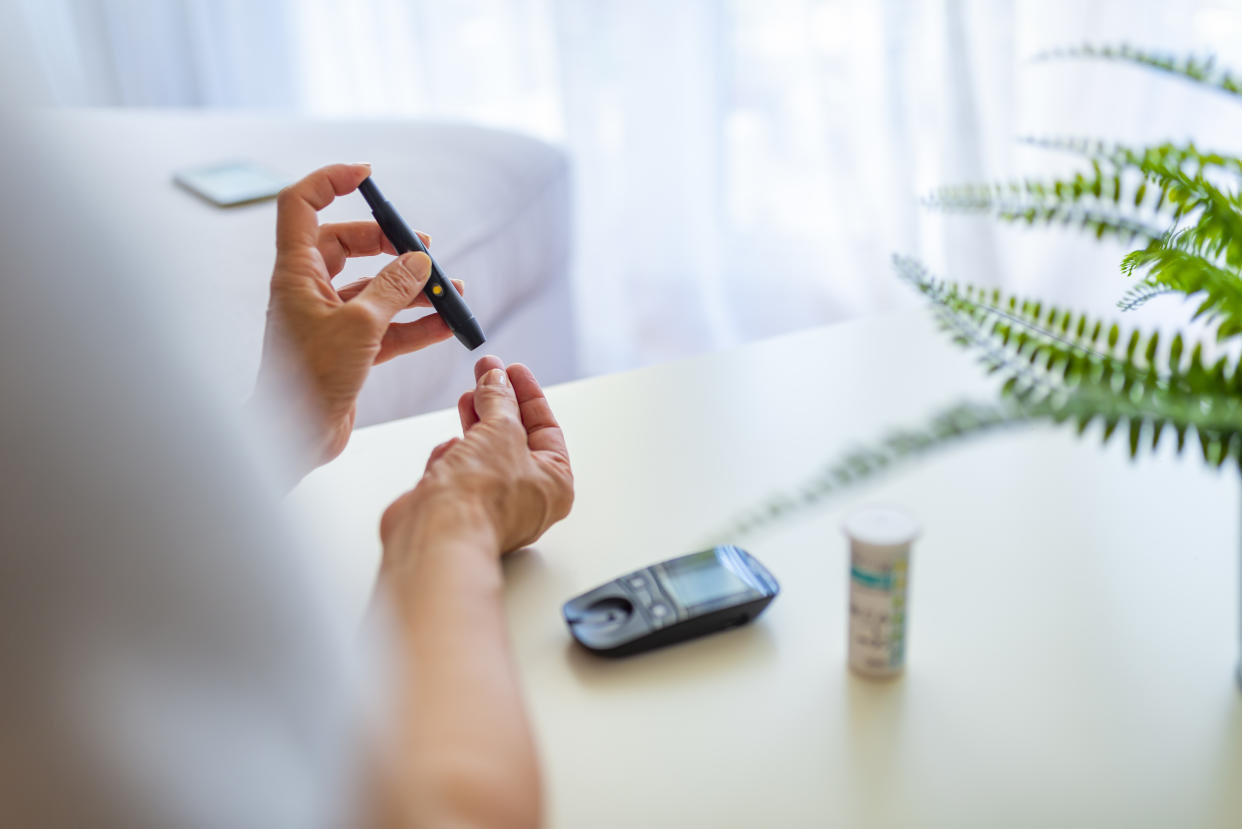Type 2 diabetics 'are 50% more likely to die prematurely'

Type 2 diabetics may be 50% more likely to die prematurely than those without the condition, a charity has claimed.
In the UK alone, 3.9 million people live with diabetes, of which 90% have type 2.
Read more: Diabetes: the symptoms, treatment and everything else you need to know
Type 1 diabetes comes about when the immune system mistakenly attack cells in the pancreas that produce the blood sugar lowering hormone insulin.
Type 2 occurs when the body does not make sufficient amounts of insulin or does not respond to the hormone that is produced.
The main complication of diabetes is high blood sugar levels, which can seriously damage everything from your eyes to your feet.
Looking specifically at type 2, Diabetes UK found patients are between twice and 2.5 times more likely to experience heart failure than a non-diabetic.
They are also more than twice as likely to have a heart attack.
A key difference between type 1 and type 2 is the former is not brought on by lifestyle factors, while the second is known to be linked to obesity and excess weight.
This has been blamed for the rise in diabetes cases, with an extra 100,000 people in the UK living with the disease compared to just last year.
Obesity is also a growing issue, with rates almost doubling in the last 20 years from 6.9 million to 13 million in England alone.
Diabetes UK worries government efforts to tackle obesity have “stalled”.
“Under both Theresa May and Boris Johnson the government has consistently failed to publish the results of numerous consultations on the matter,” it said.
The charity wants to see the government making childhood obesity a top priority to “stem the tide of obesity”.
Read more: Just two cups of filtered coffee a day could slash the risk of type 2 diabetes by 60%
More than one in five children start primary school overweight or obese, rising to one in three by the time they leave.
Obesity in children has consistently been linked to an increased risk of the condition in later life.
“Type 2 diabetes is an urgent public health crisis, and solving it depends on decisive action that’s led by government, supported by industry and delivered across our society,” said Chris Askew, chief executive of Diabetes UK.
“More than half of all cases of type 2 diabetes, and the accompanying risk of developing devastating complications, could be prevented or delayed by supporting people to make healthier choices.
“This includes mandating industry to make food and drinks healthier, and addressing the marketing and promotion of unhealthy foods.
“The government promised to tackle obesity, and it’s time for them deliver on this promise, and lead the way in affecting real change.
“Preventing type 2 diabetes, and the development of devastating complications for those living with the condition, has to be a public health priority.”

What are the symptoms?
Type 1 symptoms tend to come on quickly, over a matter of weeks or even days.
One of the earliest warning signs is a frequent need to urinate.
This occurs as the body tries to rid the blood of excess glucose through the kidneys.
Type 2 diabetes is often more gradual.
With the cells not getting enough glucose, many become very tired.
Three in five patients, however, have no symptoms when diagnosed with type 2.
Many also dismiss the vague warning signs as nothing to worry about.
As a result, some live with the condition for up to a decade, not knowing it.
Read more: How severe is the obesity crisis?
Symptoms that type 1 and type 2 diabetes share include extreme thirst, unintentional weight loss, thrush or genital itching, slow wound healing and blurred vision.
High levels of glucose in urine make the genitals the “perfect breeding ground” for fungal infections, hence many developing thrush.
While they may be easy to miss, ignoring symptoms can trigger diabetic ketoacidosis (DKA).
This occurs when the body starts to run out of insulin.
It responds by breaking down fat for energy, which causes the release of harmful substances called ketones.
Left untreated, DKA can be life-threatening.
How is diabetes treated?
Type 1 diabetes is incurable, with patients requiring lifelong insulin.
This can be taken via an injection or pump.
Some may be able to have a transplant of the pancreatic cells that produce insulin.
While not a cure, the procedure could prevent “hypos” - when blood sugar levels fall dangerously low, usually due to an incorrect insulin dose.
Some type 2 diabetics also require insulin to help control their blood sugar levels.
Tablets, the most common being metformin, can also help.
Type 2 diabetics can go into remission if their blood sugar levels return to normal, usually via weight loss.
Shedding around 33lbs (15kg) “significantly” increases a patient’s hopes of remission.
There is no guarantee, however.



